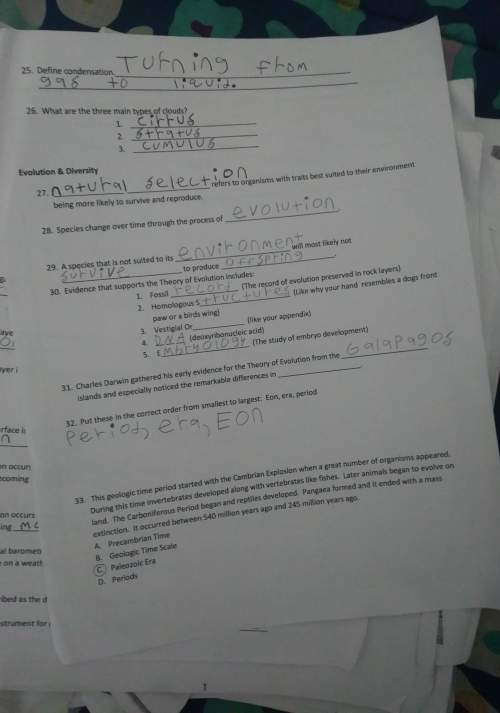
Physics, 25.02.2020 20:00 alexiaaaa234
You are in a rocket moving away from Earth at one-third the speed of light relative to Earth. A friend is on Earth, and an astronaut in another rocket is moving toward Earth at one-third the speed of light (in the Earth reference frame), on a path collinear with your path.
If each of you records the duration of your journey in your three respective reference frames, which of you records the proper time interval?
Check all that apply.
a. Your friend records your proper time interval.
b. The astronaut records your proper time interval.
c. You record your own proper time interval.
d. Nobody records your proper time interval.

Answers: 3


Another question on Physics

Physics, 21.06.2019 17:00
Shelly experiences a backward jolt when the driver starts the school bus. which of the following explains this phenomenon? a. the inertia of shelly b. the inertia of the bus c. the normal force of the seats on shelly d. the net force acting on shelly in a backward direction e. a zero net force acting on shelly
Answers: 1

Physics, 22.06.2019 00:30
What is the acceleration of a spaceship that is initially at rest and then speeds up to 220 m/s in 20 seconds
Answers: 1

Physics, 22.06.2019 12:50
Assume you measured the mass of the cart to be (500 ± 1) g and the mass of the additional mass you put on the cart to be (500 ± 1) g as well. since the scale you are using in the lab cannot measure objects heavier than 600g you will have to sum up individual pieces and propagate the error. so what would be the mass and the standard error of the cart and the mass
Answers: 3

Physics, 22.06.2019 15:00
Consider a uniformly charged ring in the xy plane, centered at the origin. the ring has radius a and positive charge qdistributed evenly along its circumference. a)what is the direction of the electric field at any point on the z axis? . b)what is the magnitude of the electric field along the positive z axis? use k in your answer, where k=14πϵ0. d)the ball will oscillate along the z axis between z=d and z=−d in simple harmonic motion. what will be the angular frequency ω of these oscillations? use the approximation d≪a to simplify your calculation; that is, assume that d2+a2≈a2. express your answer in terms of given charges, dimensions, and constants
Answers: 2
You know the right answer?
You are in a rocket moving away from Earth at one-third the speed of light relative to Earth. A frie...
Questions


SAT, 24.04.2022 20:20


Mathematics, 24.04.2022 20:20

Social Studies, 24.04.2022 20:20




Mathematics, 24.04.2022 20:40

Mathematics, 24.04.2022 20:40

Social Studies, 24.04.2022 20:40



Mathematics, 24.04.2022 21:10

Social Studies, 24.04.2022 21:10

Mathematics, 24.04.2022 21:10



English, 24.04.2022 21:50

English, 24.04.2022 21:50




